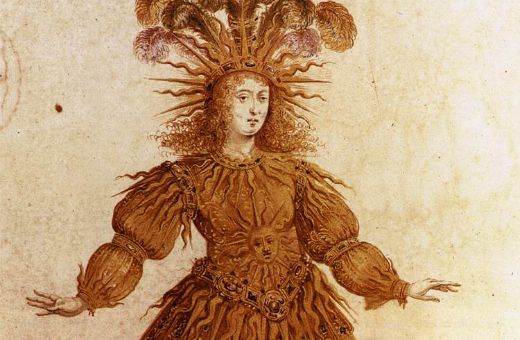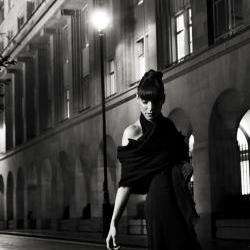It’s common knowledge that Louis XIV developed the foundations of classical ballet in the late 17th century, during his long and rather extraordinary reign as King of France.
It’s a lesser known fact, however, that Italian artists ought to be credited as the true masterminds of the technique. As a French trained dancer and proud patriot forever besotted with French footwork and those super-elongated, perfectly articulated pins that grace the Garnier stage, I’d love to start this story in Versailles and I’m even tempted to concede that this Louis couldn’t have been that bad for the country after all, what with this formidable legacy!

But that wouldn’t be quite right. To grasp a better picture, we need to go back to the Renaissance period and to the courts of Italian city states, when and where artists and their noblemen patrons were starting to forego religious medieval art production, reconnecting instead with the humanist values of Antique Greece and the Roman Empire. This renaissance (or rebirth) of classicism was observed in visual art, theatre and architecture, and it also brought back philosophy theories and considerations of the ideal human body. It wasn’t long before the sculptures commissioned by contemporary rulers bared startling resemblance to those of the strong, toned and beautiful physiques of the war heroes and greek olympians of the Antique period. And together with the ideal body and military prowess came a certain mindset, a knowledge of classic literature and theatre and a certain sophistication; an acquired taste for harmonious and delicate aesthetics. Evidently, all of the above was to be exhibited and displayed for as many people as possible to see. Lavish decorations (the genesis of our contemporary set designs), elaborate costumes and elegant processions (usually free movement with perhaps cues in directions, pathways, or pace here and there) took centre stage in parties and ceremonies. There wasn’t yet an ordered way of moving as a group, nor was movement specifically set to music, yet both featured alongside each other in both private (for noblemen only) and public parties and celebrations as if treasured ornaments of the rich and fabulous’ every move. Yet the earliest record we have of a set ‘dance’ was in France, and dates back to 1393, and Charles VI’s Le Bal des Ardents. During an extraordinary party, amidst grand decorations and minutely detailed acts, an ensemble dance was set to music for the noblemen’s parade through the party, marking the first choreographed court ‘dance. It’s worth pausing a moment here, to say that the whole set apparently caught fire, burning everything and killing many – save the king and a courtisane, who had (so the story goes) moved aside to engage in a rather private moment.
As the Renaissance artistic movement spread across Europe, so did the art of procession and ceremonies. The wedding of Catherine de Medici (an Italian noblewoman of the immensely influencial Florentine de Medici family) to the future French King Henry II marks an important turn in the development of arts patronage in France. Catherine, who ruled France as a regent when her son was still too young to rule, spent enormous sums on developing the arts in the French Court. She convinced the most talented Italian artists and craftsmen to come over from Italy, and visual art, literature, theatre and, notably, the performing arts, flourished under her patronage. She developed dance from original intermèdes (shorts breaks in larger spectacles which featured music and organised, harmonious movement, until then mere divertissements), into Ballets de Cour, dance performances in their own right, usually on a large scale which featured more or less complex choreography for (interestingly) the women of the court – sometimes up to hundreds of them at once. Distinctively grand, increasingly popular, and progressively embellished, the Ballet de Cour continued to develop from then on, alongside music, in the French Court.
But nothing could have preceded Louis XIV’s all consuming need to shine. An oppressive ruler, consumed by greed and power, and forever obsessed with his image, the young Louis (who became king at the tender age of four) saw fit that he should be at the centre of court dances and processions. He had to be the best of the dancers (who at the time, were not professionals as such but noblemen – and by then, men only) and everyone around him was made to observe étiquette during performances, as well as in daily life in his sumptuous palace of Versailles. His received his education in music and his first lessons in dance by (yet another) Italian, the Florentine-born Jean-Baptiste Lully, who caught his eye during a Bal de Cour. Louis XIV named Lully Versailles’ official composer. The Italian went on to develop the distinctive Baroque style, and he is also to thank for the multitude of ballet scores he created for the court. Eventually, Lully directed the Académie Royale de Musique, appointed to the position by the King himself. Versailles’ Ballet Master was – thankfully! – French: born and bred in Versailles, Pierre Beauchamp spent his lifetime serving Louis XIV, teaching him dance for over twenty years, then directing the Académie Royale de Danse, which the king founded in 1662 with the intention of bringing together the best ballet masters of the time to codify ballet technique. Beauchamp is credited with formalising the five positions of the feet, still used to this day by classical ballet dancers all over the world.
Only select noblemen were allowed to dance and learning how to master postures and steps was very much part of a gentleman’s education, although it goes without saying than no one was to overshadow the King’s dancing. Women were allowed to dance again from 1681, and until then, hired ‘professionals’ was used to fill in female parts in the popular narrative comédies ballets.
We can’t assert for certain whether the Sun King was ever a good dancer, or if etiquette simply forbade anyone at Court to dance better than him. But he certainly was a formidable impresario, who invested heavily into the arts and whose legacy was unprecedented. The Académie Royale de Musique (1669) and the Académie Royale de Danse (1662), now the Paris Opéra and Paris Opéra Ballet are the oldest music and dance academy in the world, where some of the most celebrated classical works of all times were born, and are still being performed, to sell out audiences.
There is one last thing we can thank Louis for (or perhaps curse him for, some dancers might argue) and that is turnout, one of the building foundations and distinctively unique characteristic of classical ballet technique. Rumour has it that in Versailles, the richer the man, the most detailed and sophisticated the heel of the shoe. It might well be true, for it would explain the Sun King’s (and his subjects’) irrepressible need to present and show off the inside of his (their) heel to the audience, leading over time, to the development of a very specific foot, ankle and lower leg articulation, and subsequently, a full leg rotation into turn out.


